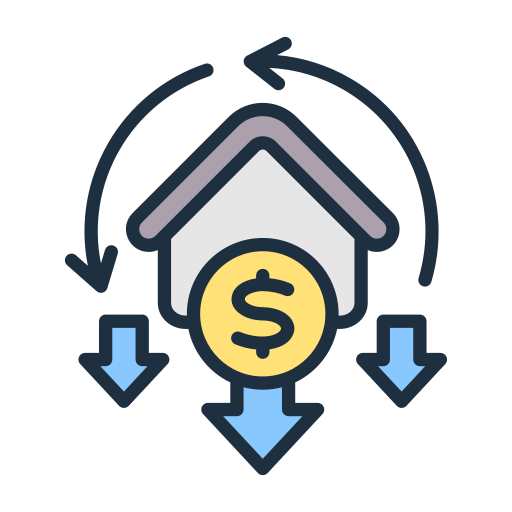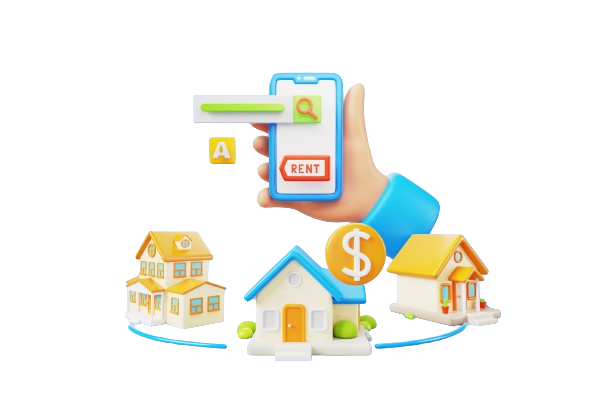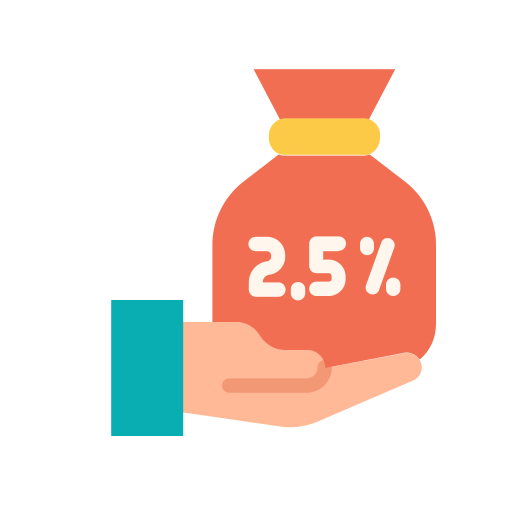Home Loans Made Simple
Unlock Your Dream Home with Money Solution Home Loans
Start your journey to homeownership now with Money Solution Home Loans. Your dream home is just a step away!

Essential Attributes of Home Loan Quick Approval Process

Swift Approval Process
Our streamlined process ensures swift approval, getting you the keys to your new home faster.

Competitive Interest Rates
Benefit from our low-interest rates, saving you money over the life of your mortgage.

Minimal Documentation Required
Tailor your repayment plan to fit your budget with manageable payments.

Flexible Repayment Options
Personalize repayment based on your financial needs.
Apply for a Money Solution Home Loan in 3 Easy Steps:
- Step 1:Visit Our Website
- Step 2: Fill Out the Application
- Step 3: Submit and Get Pre-Approved





Your Key to Home Ownership
Understanding Home Loans: Your Guide to Buying Responsibly
A home loan is a form of borrowing money from a bank, credit union, or online lender, which is typically secured by the property being purchased and based on the borrower’s creditworthiness. It’s used for purchasing a home and repaid in fixed installments over a predetermined period.
Borrowed Sum for Home Purchase
Repaid Over an Agreed Period
Offered by Banks or Lenders
Flexible Repayment Options
Choose from a range of flexible repayment plans tailored to suit your financial needs.
Competitive Interest Rates
Benefit from competitive interest rates that save you money over the life of your loan.
Personalized Customer Service
Access personalized support from our dedicated team to guide you through every step of your loan journey.

Why Choose Us
Reasons to Choose a Home Loan
EMI Calculator
Loan EMI
Total Interest Payable
Total Payment
(Principal + Interest)

Essential Requirements for Quick Home Loan Approval
Essential Documents Needed for Home Loan
Frequently Asked Questions
A Home Loan is finance provided by a bank or a financial institution to enable its customers to purchase or construct or improve their homes.
Buying a home could be one of the biggest achievements of a person’s life. In most cases, it takes an entire lifespan to fulfil the dream of purchasing one’s own home. Selecting the ideal property involves a lot of research and planning. Arranging funds is probably the toughest and the trickiest part of the process.
You could dip into your savings for the entire payment or decide to get a Home Loan at a good interest rate.
A decade or so earlier, borrowing from a bank used to be a cumbersome process but today financial institutions have simplified the entire Home Loan application and disbursement process. All leading financial institutions offer Home Loans with attractive interest rates, flexible repayment periods, quick turnaround times and unique product features.
Before finalising on a lender, one must understand the intricacies of a Home Loan.
How should I compare what each bank is offering me? Is there anything in the fine print I should be worried about?
Money Solution can help you get the ideal Home Loan – Let’s Seal the Deal!
Availing a Personal Loan as an additional back-up is something you could consider if you find yourself in a tough spot. Some people take Personal Loans to consolidate their credit card debt. You too can do this and pay off your existing credit card outstanding amount. Money Solution has products which offer Personal Loans for home renovation as well as consumer durables like a television or a refrigerator – the possibilities are endless.
A decade or so ago, taking a Personal Loan was not common. Now, with rising incomes and increased competition among banks to improve their credit portfolios, Personal Loans have become more accessible. There are various advantages of taking Personal Loans. Banks these days offer attractive interest rates as well as the flexibility of repayment.
Money Solution can help you decide on a Personal Loan with options from over 70+ banks and NBFCs (Non-Banking Financial Companies).
An accomplishment – Every individual dreams of owning a house in their name. A home loan allows you to accomplish this feat and realize your dreams. This is one of the biggest financial investments you make in your lifetime and can therefore be considered an accomplishment.
Capital appreciation- Land is an appreciating asset in most cases. Construction costs have also increased over the years. As rents get more expensive with inflation, investing in your own house can shield you from inflation.
Benefits in interest rate- In the 90’s, banks used to charge up to 18% interest on loans. Today, you are able to get a home loan at 7.65% annually. The decrease in the interest rates coupled with capital appreciation makes it a dual benefit plan.
Tax benefits- The Government of India has played the biggest role in boosting the home loan sector. As per Section 24B of the Income Tax Act 1961, you get a deduction of 2 Lakhs towards repayment of interest towards loans availed for purchase/construction of house (if you or your family is living in the house). At the same time, Section 80CC read with Section 80CCE of the Income Tax Act 1961 allows for a tax deduction up to 1.5 Lakhs on repayment of principal amount of the home loan. This is one of the greatest incentives for people to opt for a home loan, even if you are able to afford to buy your house with your savings.
Applying for a Home Loan may seem like a daunting task and information on Home Loan can be confusing as each bank will have its individual Home Loan scheme and interest rate. It can become difficult for you to compare the individual rates and make an informed decision.
Money Solution Expert can help you procure all the information at a single place whereby you can compare the different rates on a single screen. In addition, Money Solution Expert can help you seal the best deal depending on your demographics, income, and repaying capacity. They have over 28 years of experience to guide you about various aspects of your Home Loan. This includes helping you opt for the bank that provides the following:
The lowest rate of interest
Lowest processing fees
Easy documentation
Fastest loan turnaround time
Terms of foreclosures and pre-payment of Home Loan installments
Transaction charges such as the creation of a mortgage and payment of stamp duty
MMM are specialists in this field and can help you to:
Assess your personal profile
Analyse your previous repayment record
Understand the various policies of the banks financing home loans
Understand the fine print, especially in case of offers that seem overtly attractive
Money Solution Expert can help you realize your dream of acquiring your own house.
After completing the above process, you can zero in on the loan provider. Keep all your documentation along with the application form ready and the Money Solution team will contact you and assist you in the application process. This service comes at no cost to you!
The lender will verify all your documents. The next step is the valuation and legal scrutiny. Banks have their panel of evaluators and advocates to do this for them.
A personal discussion between the lender and the borrower is the next step on the agenda. The lender usually meets the borrower at their residence to get first-hand information about the borrower’s income, property, investments, and also the source of funds to meet the margin requirements. This is a sort of a pre-sanction inspection carried out by the bank.
Once the verification and processing are over, banks provide you with a loan offer letter which contains the terms and conditions of the sanction. In case you choose to accept them, you need to sign one copy and deliver it to them followed by execution of the home loan documents. Money Solution plays a big role in this regard and our experts will assist you every step of the way.
The Base Rate is the minimum rate at which the banks can sanction loans to its customers. The RBI (Reserve Bank of India) does not permit banks to lend below the base rate. This concept brings in a lot of transparency into the lending processes of the banks. The Base Rate concept came into effect from July 01, 2010. From April 01, 2016, the RBI has introduced a new methodology for calculating base rates. This is the MCLR concept. Banks have to set up five different benchmarks depending on the time period (overnight, 1-month, 3-month, 6-month, and 1-year). Various factors such as the Cash Reserve Ratio (CRR), Statutory Liquidity Ratio (SLR), the Repo rates and the Reverse Repo rates influence the calculation of the MCLR. There are other factors such as tenure premium, the marginal cost of funds, operating cost, negative carry on CRR and so forth that affect the MCLR. These factors vary from bank to bank. Hence, each bank has its individual MCLR.
Prior to 2010, banks had a system known as the Benchmark Prime Lending Rate (BPLR). Banks had the freedom to charge interests at below the BPLR of the bank. Taking advantage of this provision, banks have charged rates of interests on various corporate loans at less than 4%. This naturally affects the profitability of the banks. In order to bring in a sense of transparency, the RBI came up with the Base rate concept, below which a Bank cannot lend. This has now been tweaked to MCLR. The calculation of MCLR depends on various factors:
Repo rate -This is the rate at which RBI lends to banks to meet its shortfall. In case the RBI wants an infusion of funds into the system, it will lower its repo rate. (Presently 6%)
Reverse Repo Rate -This is the rate at which RBI borrows from the banks. This is an effective financial instrument to control the supply of money. In case the RBI increases the Reverse Repo rate, it will lead to a decrease in the money supply in the market. With a lower Reverse Repo, the banks will prefer to park their surplus funds with RBI thus reducing the amount available for lending in the market.
Cash Reserve Ratio (CRR) -Banks are mandated to maintain a proportion of its net time and demand liabilities in the form of cash deposits with RBI. This is to ensure the safety of public funds.
Statutory Liquidity Ratio -In addition to the CRR, banks are mandated to maintain a percentage of its net demand and time liabilities with RBI in the form of cash, gold, and other unencumbered securities. This reduces a banks’ ability to lend in the market.
Purchase of a flat in an apartment complex – Banks finance their customers to buy flats in residential complexes. Here you have the concept of an Undivided Share (UDS) in the land.
Purchase of individual house -This is similar to the type of Home Loan described above however there is no concept of ownership of UDS. The entire land belongs to the borrower. Naturally, such houses have a better resale value.
Purchase of Land/Plot -Banks finance their customers for the purchase of vacant plot or land for subsequent construction of house. Usually, banks stipulate that the construction of the house should begin within one year of purchase of land for the loan to be treated as a Home Loan.
Construction of a house on own land/land purchased out of bank finance -You can avail a loan for constructing your house on your land. Banks have their methods of determining the cost of construction. Naturally, you need to obtain the requisite permission from the local municipal authorities for constructing your house on the land. You need to have an approved plan as well.
Home improvement/extension -You can approach a bank for financing home improvement or for extending the house. In the latter case, you need to have the requisite approvals and plans in place.
Balance Transfer -This facility allows you to switch over your Home Loan from one bank to the other. If you have a high-interest Home Loan, availing this facility can be useful. You could transfer your outstanding loan amount to another lender at low interest rate, thus saving on interest cost
Various factors go into the determination of your Home Loan eligibility. The basic rules for salaried people and self-employed people are the same. Some banks stipulate a higher take-home pay percentage for self-employed persons.
Your current income -Salaried employees can submit salary slips for the last three months and furnish a bank statement for the past six months where their salary is credited. Self-employed professionals should submit the statement of accounts for one year where they receive the credits for the services rendered by them.
Continuity of employment/business -Salaried employees can rely on their income tax returns, Form 16, Form 26AS, etc to display their continuity of employment. They can also show a statement of the Provident Fund account to establish the links. Self-employed businessmen and professionals can furnish the income tax returns along with other financial statements like balance sheet and profit and loss statements. They can also furnish copies of invoices raised by their clients.
Current obligations -It is possible that an applicant might have pre-existing personal loans, vehicle loans, and other loans for which they might be paying instalments. You have to account for these instalments as well while calculating Home Loan eligibility.
Credit history -The repayment track record of the applicant is of utmost importance. Every bank or financial institution is a member of CIBIL or another credit bureau. These bureaus keep track of the loan activities of every borrower. Based on this information, they generate your credit history profile and quantify the same by generating your credit score. This is a number ranging between 300 and 900. The higher your score, the better are your chances of getting a loan. Naturally, it goes without saying that defaults, frequent requests for loans or missing payments can pull down your credit score. A score of 600 and above is considered fair for determining HL eligibility.
Value of the property -The value of the property you purchase is important. The financing bank needs to determine the cost of the project it is going to finance. Banks usually finance up to 75% – 90% of the value of the property (also known as LTV or Loan to Value Ratio) with the balance being your contribution or margin as they call it.
Legal position -The prime security for any home loan is a mortgage of the land and building they have financed. You have to create the mortgage and register the same with the respective registering authorities. In order to do so, you must be legally empowered to create the mortgage. Hence, banks and financial institutions insist on a legal scrutiny report from their panel of advocates who carry out a search for the previous 30 years to establish the ownership chain.
Age of the borrower -The minimum age of the borrower at the time of application of the HL should be 21. The age at the time of maturity should generally be 65 years. Some banks stretch this limit to 70 years
Every customer has to satisfy the Know Your Customer (KYC) norms stipulated by RBI. You have to provide the documents relating to your KYC, employment, business, and income.
Identity Proof
PAN Card
Aadhar Card
Voter ID
Driving Licence
Passport
Address Proof
Registered Rent agreement
Aadhar Card
Driving License
Lease agreement
Passport
Latest Gas or electricity bill
Financial Documents – Employment or Business Proof
Salary slips for the last 6 months in case you are a salaried employee (In addition, you can provide IT returns for the past 3 years along with Form 16)
IT returns for the past 3 years in case you are self-employed (Some banks accept 2 years IT returns as well)
Statement of A/c for the past 1 year where your salary is credited (in case of salaried people)
Profit and Loss statement and Balance sheet for the last 2 years in case of self-employed persons
Sales tax, GST registration certificates, if applicable
Partnership deed in case of partnership firms (if the applicant is one of the partners)
Certificate of Incorporation in case of limited companies(if the applicant is one of the directors)
Other documents:
Loan application form duly filled in
Photographs
Signature Proof
Property documents:
Copies of all property documents that can establish the chain of ownership for the past 30 years
Encumbrance certificate for 30 years
Property tax paid receipt in case you reside in the property being mortgaged (usually when you apply for Home Loan Balance Transfer)
There is nothing like a free lunch in this world. Therefore, you should be ready to pay the processing fees for your housing loan. Is this the only charge you will incur? It depends from bank to bank. Some banks charge less processing fees, but may make up for that somewhere else. On the other hand, some banks and financial institutions consolidate their charges and include them in the processing fees. Let us look at some common charges you will most likely incur when you apply for a home loan.
Upfront fee for processing -Many banks charge an upfront fee for processing your application. This is usually in the range of 3000 to 5000. This is a non-refundable fee, even in case the bank rejects your loan application. In case they sanction your loan, they adjust this fee in their regular processing fees.
Processing fee -This amount ranges from 0.25% to a maximum of 2% depending on your employment status. Salaried employees incur a smaller fee whereas self-employed professionals and business persons have to pay more. Some banks do have a uniform rate. Note that you have to pay GST @ 18% on this processing fee.
Valuation charges -Many banks charge for the valuation of the property. They have independent evaluators on their panel. These banks have a fixed structure of payment. Some banks insist that the customer pays to the bank whereas some of them include this amount in their processing fee structure.
Legal scrutiny charges -Legal scrutiny of the property is mandatory. The financing bank has to ensure that you get a clear title to the property so that the mortgage holds well in law. Therefore, they have a panel of legal experts who carry out the search for a period of 30 years. You need to supply the property documents to these advocates to allow them to do the needful. Some banks ask the customer to pay the advocates separately whereas many banks include these charges in their processing fees.
Mortgage registration charges -The prime security for the home loan is an equitable Most of the states in India require you to register the equitable mortgage in the bank’s favour. Under such circumstances, you incur stamp duty and registration charges. The equitable mortgage does not attract stamp duty in some states like Rajasthan. However, in states like Tamil Nadu, there is a stamp duty of 1% of the loan amount subject to a maximum of 25,000. In addition, you have to pay 5,100 as registration charges. Be aware of these additional expenses when you avail Home Loan.
Pre-EMI charges -Some banks have the system of charging pre-EMI charges. Ascertain these charges beforehand.
Insurance -Taking out insurance for the property is mandatory. At the same time, many banks and financing companies bunch a lot of their products like loan insurance, Mediclaim family floater policies, accident insurance, and critical illness cover, etc along with the loan. They provide the financing for the premium as well. Of course, you have to repay the same in your EMI. In a way, it is good to have these insurance policies because life is uncertain. In case something happens to the breadwinner and the principal borrower, the insurance can take care of the liability. However, other than the property insurance, all the other policies are optional. You can refuse to take them.
Use our easy to use EMI Calculator. Enter your loan amount, rate of interest, and tenure. You get your EMI as well as the complete chart for the entire tenure within no time at all. You get the yearly breakups thereby enabling you to plan your tax payments properly.
One of the biggest predicaments faced by the customers availing home loans is whether to go for a fixed rate of interest or a floating rate. In case you feel that the interest rates can rise in the future, it is better to go for a fixed rate. However, if you expect the rates to remain stable or go down, it is advisable to stick to a floating rate of interest.
Note, fixed rates of interest are usually 1.25% to 1.50% more than floating rates. Therefore, if you expect the rates to rise more than 1.50%, it will make sense to opt for a fixed rate. The chances of a steep increase are remote. The competition in the market is such that it will not allow the rates to fluctuate dramatically.
Many banks have a teaser-like interest rate system whereby they offer fixed rates for the first five years subject to a resetting option thereafter. This is also a good option to explore. The advantage of the fixed rate of interest is that your EMI remains fixed for the entire period of the loan. This is not the case in the floating rates. Banks are very quick to increase the EMI and demand the same when the rates go up. This can affect your overall budget. This is because even a difference of 100 per Lakh can result in an increase in the EMI by 3,000 in case you have a loan of 30 Lakhs
The thumb rule is that banks finance homes in the range of 75% to 90% of their market value. Therefore, your contribution towards acquiring your home is between 10% and 25%.
What is the need for the margin when the value of the property is going to appreciate in the future? It is true that property rates will appreciate over time. The loan amount will decrease because of your repayments. This is the ideal situation. However, banks have to look at the other side of the story as well. They need to have sufficient security on hand to take care of defaults. You have to admit that defaults are part and parcel of the loan portfolio. The stringent NPA (Non-performing Asset) norms do not allow the banks to realize the income that they have not earned. But, they have the option of taking possession of the property and bringing it for sale. Now, this is a distress sale. Hence, they cannot expect to realize the market value of the house. Therefore, the margin does come in handy for them.
Secondly, when you have a stake in your property, you consider it your obligation to repay on time. This is why the banks maintain LTV (Loan-to-Value) ratio in the range of 75% to 90%. If you see these things from the bank’s angle you will appreciate the LTV concept. Every asset of the bank has an element of risk attached to it. This is the main reason they take adequate security for the amounts they finance. The rules stipulate that the banks attach a risk weight to every asset. The banks have to make an overall provision calculated on the basis of the risk weights attached to each asset. This helps the banks calculate the Capital to Risk (Weighted) Assets Ratio. The overall health of the bank depends on these ratios. The LTV concept plays a big role in the calculation of CRAR (Capital to Risky Asset Ratio) because the assets that are adequately secured carry a lower risk weight in comparison to the assets that do not have security. This explains why a Personal Loan or a credit card balance attracts a higher rate of interest than a secured loan such as a Home Loan.






